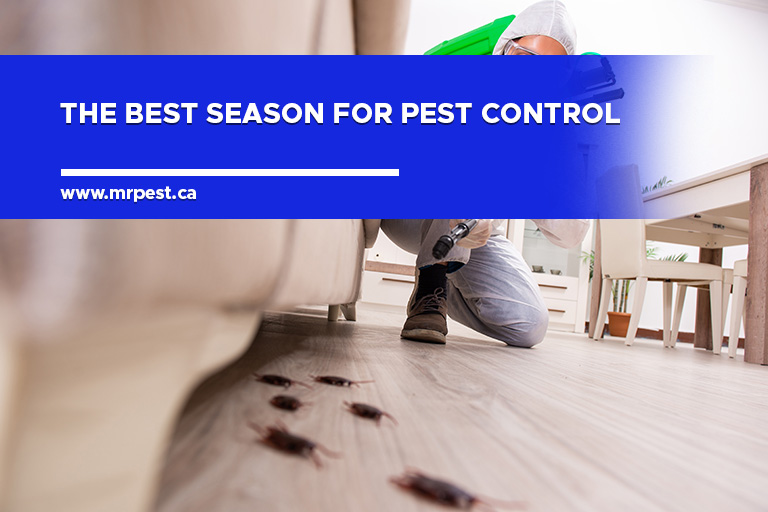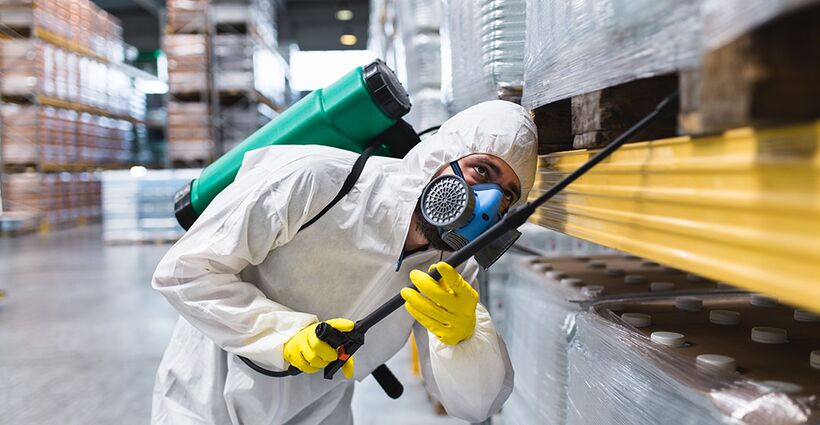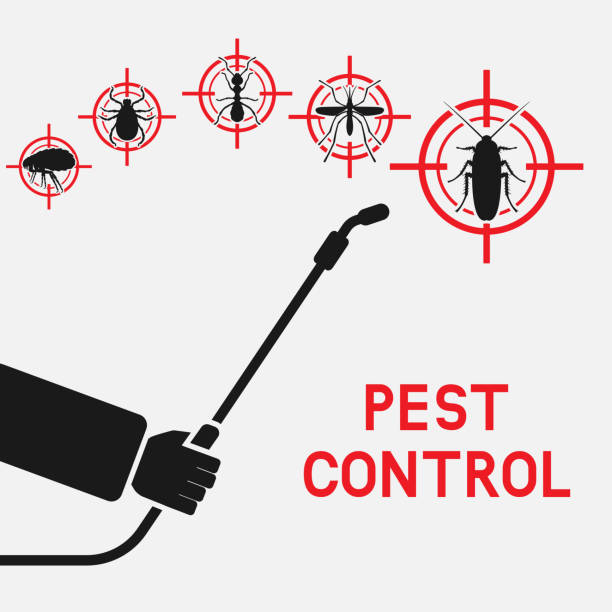Safe and Reputable Parasite Control for Lasting Defense
Reliable parasite administration requires a multifaceted method that stabilizes environmental integrity with the demand for efficient parasite suppression. The nuances of these approaches may not be immediately clear, triggering a closer exam of the techniques that can lead to sustainable bug control outcomes.
Recognizing Pest Control Methods
Pest control includes a range of techniques focused on managing and eliminating undesirable bugs and rats that can threaten both health and wellness and home. Recognizing these techniques is crucial for efficient parasite management.
The main categories of bug control approaches include mechanical, organic, and chemical strategies. Mechanical methods entail physical barriers and traps to avoid insect entry and capture unwanted types. For example, utilizing screens on windows or using sticky traps can dramatically reduce insect populaces without presenting dangerous substances.

Chemical parasite control is often one of the most acknowledged method, utilizing chemicals to remove bugs. These chemicals can be efficient however should be used with care to stay clear of negative effects on non-target varieties and the atmosphere.
Benefits of Eco-Friendly Solutions
How can green remedies transform parasite control practices? The adoption of green pest control techniques provides countless advantages, substantially boosting the effectiveness and safety of insect management.

Another benefit is the positive influence on regional biodiversity. Eco-friendly services are designed to target certain insects while protecting useful insects and wild animals, promoting a well balanced community. This approach aligns with the growing consumer demand for lasting techniques, boosting the reputation of insect control providers.
Integrated Bug Management Methods
The execution of eco-friendly solutions naturally leads to the adoption of Integrated Bug Monitoring (IPM) strategies, which additionally improve insect control efficacy. IPM is an all natural technique that integrates numerous strategies to manage insect populaces while lessening ecological impact. This technique emphasizes using biological, cultural, mechanical, and chemical controls, guaranteeing a sustainable and well balanced technique of bug monitoring.
One fundamental aspect of IPM is the extensive assessment of insect activity and environmental conditions. By keeping track of pest populations and determining their life cycles, experts can execute targeted interventions that interrupt the parasite's environment or lifecycle, reducing reliance on chemical pesticides. In addition, social methods such as crop turning and environment adjustment can dramatically lessen insect facility and reproduction.
An additional vital element is using biological control representatives, such as useful pests or microbes, which can normally reduce pest populations. When wasp control chemical applications are required, IPM focuses on making use of low-risk pesticides and uses them precisely, reducing exposure to non-target microorganisms and humans.
Incorporating IPM strategies not only boosts pest control effectiveness yet also promotes a more secure community, straightening with the growing demand for lasting methods in parasite administration.
Safe Practices for Homeowners
Comprehending the relevance of risk-free techniques in parasite control can equip house owners to properly manage pest problems while securing their wellness and the setting. Executing non-toxic methods and safety nets is crucial in lessening direct exposure to dangerous chemicals.
Home owners should initially examine their environment for problems that over here draw in bugs, such as standing mess, food, and water waste. Consistently cleansing and securing access factors can deter pests from attacking the home. Making use of natural deterrents, such as essential oils or diatomaceous planet, can provide effective alternatives to chemical pesticides.
When chemical treatments are needed, homeowners need to decide for items that are especially labeled as safe for household usage. It is necessary to comply with application guidelines diligently to stay clear of overexposure. Utilizing targeted treatments in areas where insects are determined, rather than blanket spraying, can significantly lower chemical usage.
Last but not least, preserving open communication with pest control professionals is vital. Property owners need to make inquiries concerning the security of products used and demand environmentally friendly options whenever feasible. By taking on these safe practices, home owners can create a healthier living setting while properly taking care her comment is here of insect issues.

Tips for Long-Term Defense
Developing an insect management technique that emphasizes long-lasting protection can considerably improve the performance of the secure methods formerly talked about. To achieve this, property owners should execute normal inspections of their residential or commercial property, concentrating on hidden areas such as attic rooms, cellars, and crawl areas. Early detection of pest task is essential in avoiding infestations from taking hold.
In addition, maintaining a tidy environment is vital. This consists of correct food storage space, promptly cleaning up spills, and consistently dealing with waste. These techniques lower attractants that draw bugs into the home. Sealing entry points, such as splits around doors and windows, can efficiently obstruct possible pest accessibility.
Landscape design must also be thought about; maintaining plants cut and preserving a distance between vegetation and the home minimizes concealing places for insects. Making use of natural deterrents, such as essential oils or diatomaceous planet, can better dissuade invasions without considering severe chemicals.
Finally, teaming up with an expert parasite control service for periodic examinations can give an extra layer of safety. These specialists can provide customized referrals and progressed treatments, making sure that your home continues to be protected against bugs in the lengthy term.
Conclusion
To conclude, trusted and secure pest control needs a complex approach that emphasizes environment-friendly techniques and incorporated bug monitoring. By applying natural deterrents, conducting regular evaluations, and keeping appropriate cleanliness, homeowner can dramatically lower bug populaces while safeguarding valuable pests and the setting. Collaboration with professional bug control services enhances the effectiveness of these methods, making certain tailored solutions that offer lasting security and satisfaction versus future invasions.
Reliable bug management needs a multifaceted approach that stabilizes eco-friendly honesty with the requirement for reliable parasite reductions. The adoption of eco-friendly insect control techniques supplies countless advantages, significantly improving the effectiveness and safety of insect administration.The implementation of environmentally friendly options normally leads to the fostering of Integrated Bug Management (IPM) strategies, which better improve parasite control effectiveness. exterminator coquitlam. By monitoring bug populations and determining their life cycles, practitioners can execute targeted interventions that interrupt the pest's habitat or lifecycle, lowering reliance on chemical pesticides.In final thought, trustworthy and safe bug control requires a diverse technique that highlights eco-friendly techniques and incorporated insect monitoring